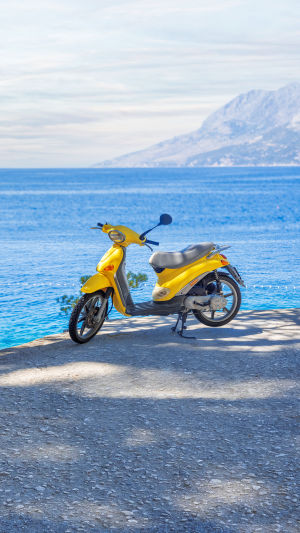Electric motorcycles, much like electric cars, are powered by electricity instead of traditional internal combustion engines. They use an electric motor to generate power, which is supplied by rechargeable batteries.
These motorcycles represent a significant shift in the motorcycling world, focusing on sustainability and reducing environmental impact.
<h3>What Is Electric Motorcycle Function?</h3>
Electric motorcycles function primarily on the energy provided by a rechargeable battery pack. Here’s a detailed look at how they operate:
<b>1. Battery:</b> The core of an electric motorcycle is its battery. Typically, these are lithium-ion batteries due to their high energy density and long lifespans. The battery stores electrical energy that powers the motor.
<b>2. Electric Motor:</b> The motor converts electrical energy from the battery into mechanical energy, which propels the bike forward. Unlike traditional motorcycles, electric motors deliver instant torque, resulting in rapid acceleration.
<b>3. Controller:</b> The controller functions as the brain of the motorcycle. It manages the flow of energy from the battery to the motor, regulating speed and ensuring smooth operation.
<b>4. Throttle:</b> When the rider twists the throttle, a signal is sent to the controller, which then adjusts the power supplied to the motor. This allows riders to control the speed of the motorcycle, just like with a gasoline engine.
<b>5. Regenerative Braking:</b> Regenerative braking systems are common in electric motorcycles. When the brakes are applied, the motor switches to a generator mode, converting kinetic energy back into electrical energy and storing it in the battery. This process not only extends the battery range but also improves overall efficiency.
<h3>How to Choose an Electric Motorcycle</h3>
Selecting the right electric motorcycle can be a daunting task, especially with the variety of models available on the market. Here are some crucial factors to consider:
1. The range of an electric motorcycle, or how far it can travel on a single charge, is one of the most critical aspects to consider. Think about your daily commute and riding habits. Models like the Zero SR/F, for example, offer impressive ranges of up to 200 miles on a single charge, making them ideal for long-distance travel.
2. Charging time can vary significantly between models. Some electric motorcycles can be fully charged in a few hours using a standard household outlet, while others may require specialized fast chargers. Assess your charging options and how they fit into your lifestyle.
3. Evaluate the motorcycle's performance, including top speed, acceleration, and handling. Electric motorcycles often provide impressive torque and acceleration, but make sure the bike meets your performance expectations for city commuting or highway riding.
Electric motorcycles are more than just a trend; they symbolize the future of sustainable transportation. With zero emissions, low maintenance costs, and impressive performance capabilities, they offer a compelling alternative to traditional motorcycles.





